
This story was produced by Experian and reviewed and distributed by Stacker Media.
Average student loan debt declines in 2024
Despite repayments on federal student loans resuming late last year, much is still up in the air with student loan debt. Some loans have been forgiven, and more than a few borrowers have received incomplete, contradictory or confusing information about their loans.
With that large caveat, average student loan balances are continuing to decline, according to recent Experian data. Broad loan forgiveness programs that have helped about 10% of all student loan borrowers, as well as modifications to existing income-driven repayment plans, are beginning to show up in the aggregated data.
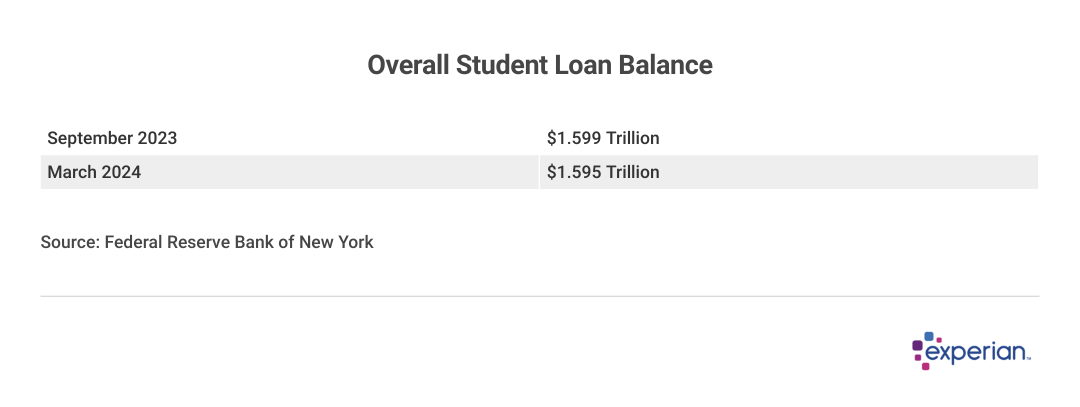
Student Loan Debt Virtually Unchanged
Since student loan repayments resumed in September 2023, total student loan debt remains virtually unchanged. The overall balance was just shy of $1.6 trillion in March 2024, according to data from the Federal Reserve Bank of New York.
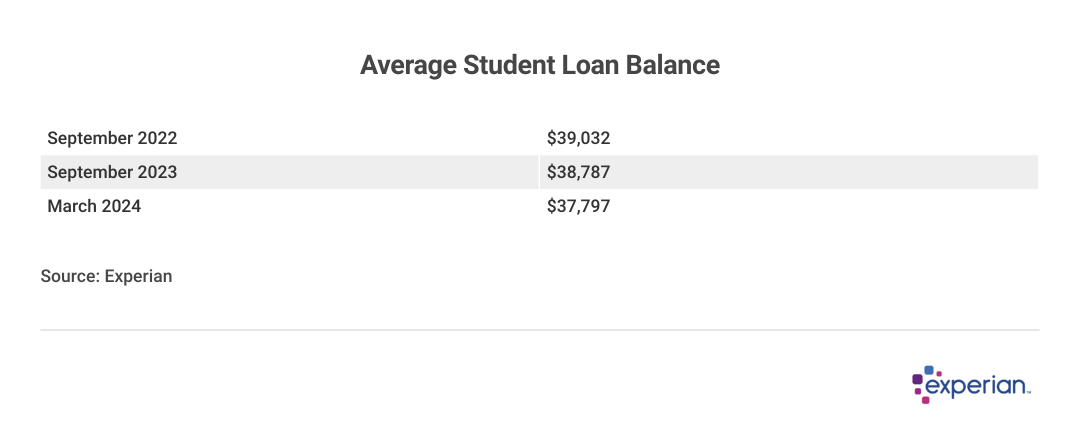
Slight Drop in Average Balances
In the months since student loan payments restarted in September 2023, average student loan balances have declined nearly $1,000 to $37,797 as of March 2024, according to Experian data.
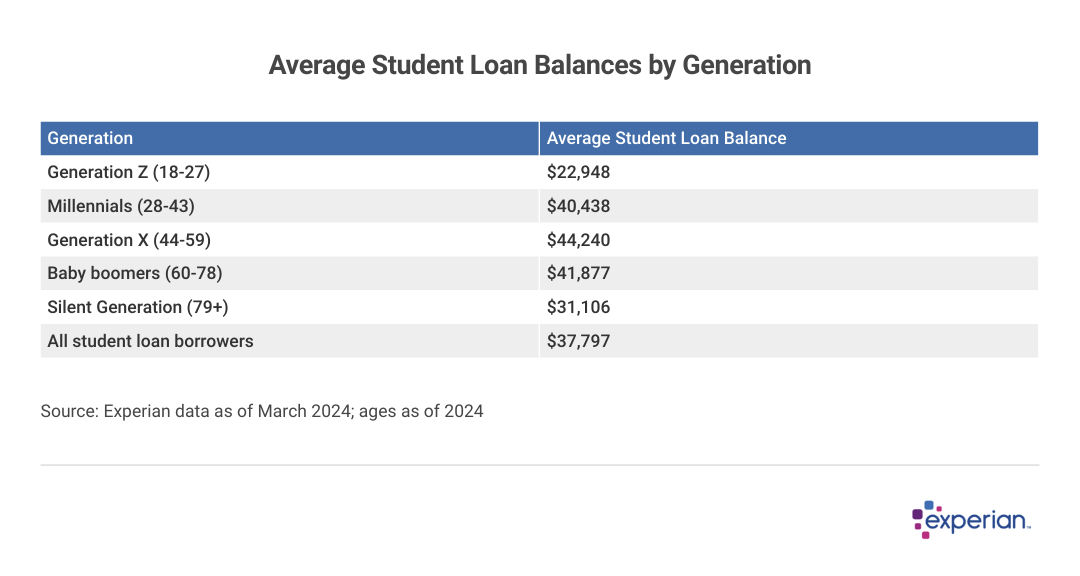
Gen X Owes the Most
Nonetheless, most generations are still managing student loan balances averaging more than $40,000. Generation X, the eldest of whom turn 60 next year, owe the most on their student loans, on average.
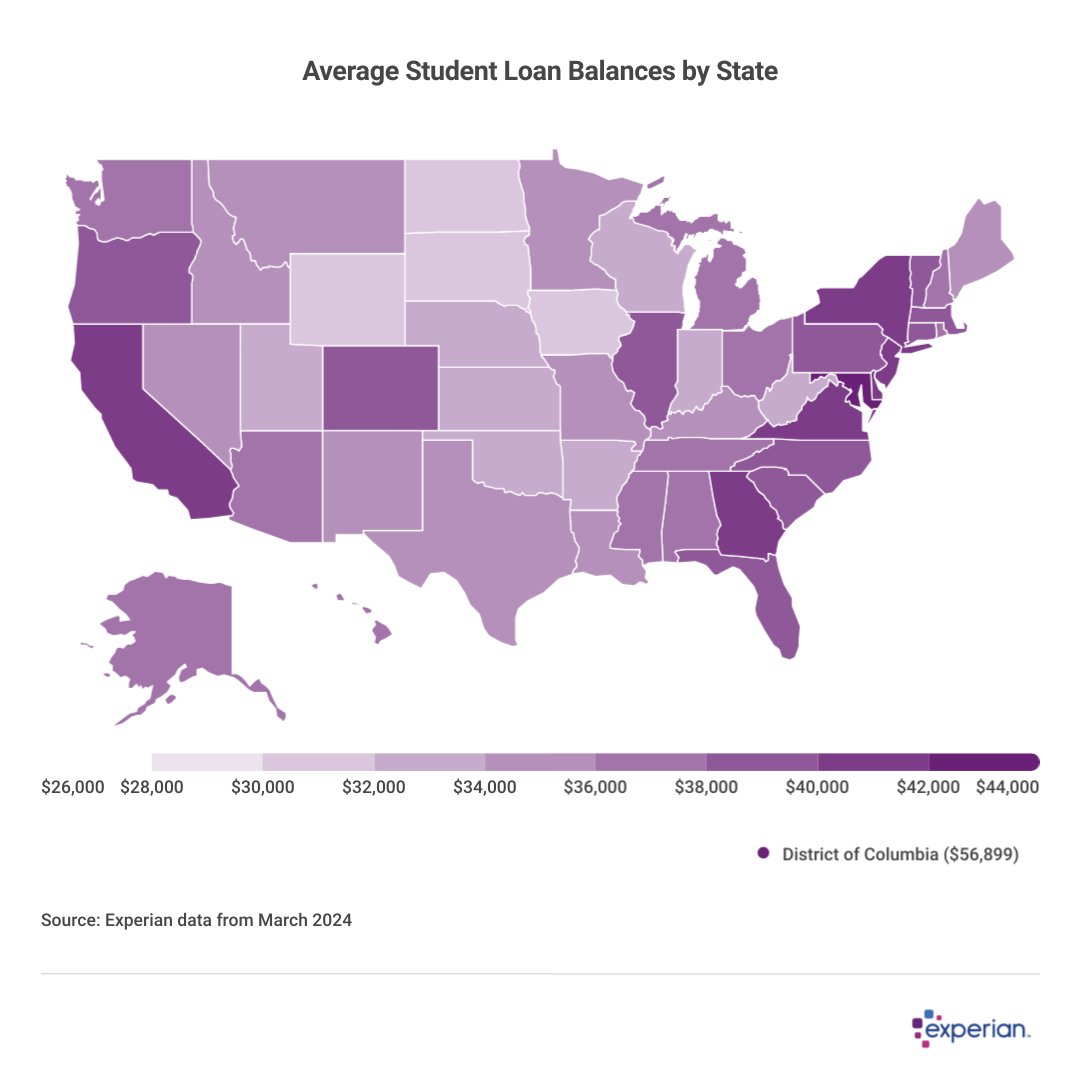
Loan Debt Varies by State
There's wider variance among the states for student loan balances than for other types of consumer debt, including auto loans and credit card debt. In most states, average student loan balances range from $25,000 to $45,000. One obvious outlier is Washington, D.C., where the average student loan balance topping $56,000 is notable.
Student Loan Forgiveness Plans Span More Than 4 Million Borrowers, Saving Them $160 Billion
According to the Department of Education, nearly $160 billion of student loan relief has been provided to student loan borrowers. This is largely from cancellations of federal student loans, but is also based on re-implementations of income-driven repayment plans. The largest slice of relief—forgiving $62.8 billion in loans to those deemed eligible through their public service—has amounted to an average of $71,000 of loan forgiveness for those borrowers.
But there are also other ways that federal-led student loan relief plans have chipped away at student loans, including providing $14 billion in forgiveness to more than a half-million borrowers with permanent disabilities, and canceling $29 billion of loans for 1.6 million borrowers through court settlements.
In most cases, borrowers had been paying their loans for years prior to the cancellations of the remaining balances by the federal government.
For Current Students, College Costs Level Off, but Are Still an Increasing Burden
Considering that nearly everything else costs more than a few years ago, it may be a surprise that college tuition costs have actually leveled off in the past few years, barely budging since 2020. Adjusted for inflation, one general measure of college costs have begun to decline, according to data from The College Board. There's still a huge sticker price for higher education, though, so it may not seem like much of a bargain.
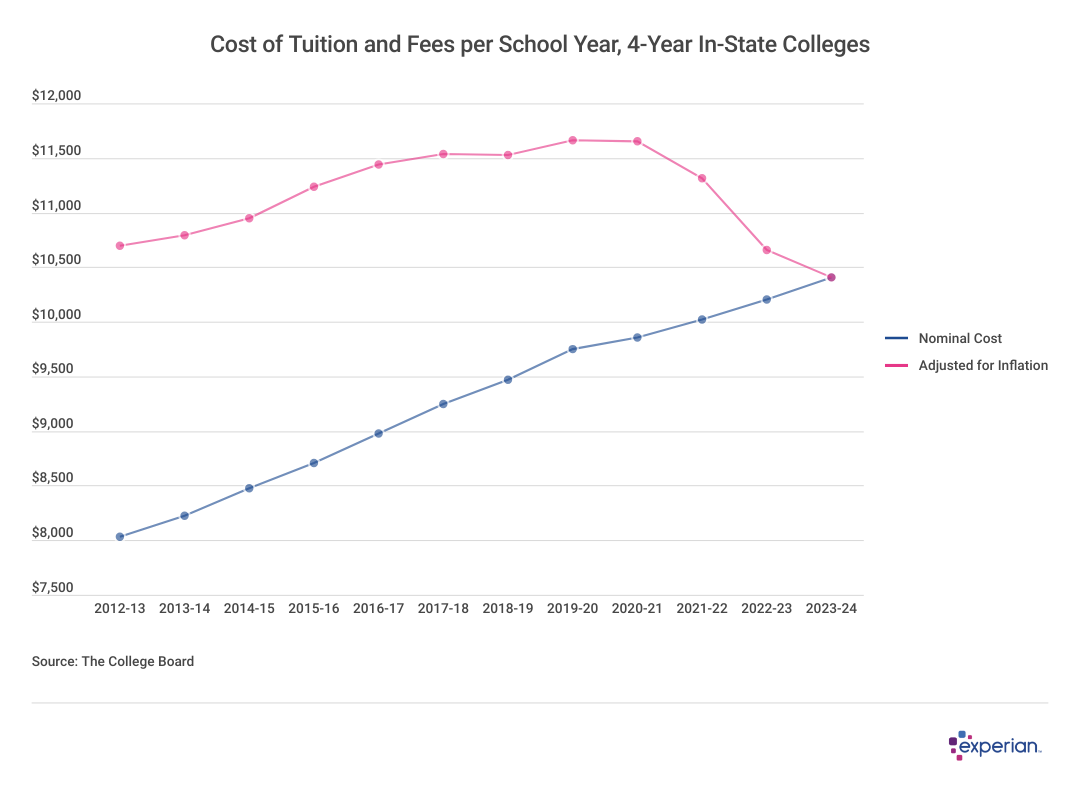
Inflation Adjustments Part of the Equation
In addition, non-tuition aspects of college have been increasing in price—like room and board as well as borrowing costs for student loans. (For their part, colleges and universities are managing financial issues of their own, in no small part stemming from demographic shifts leading to declining enrollments.)
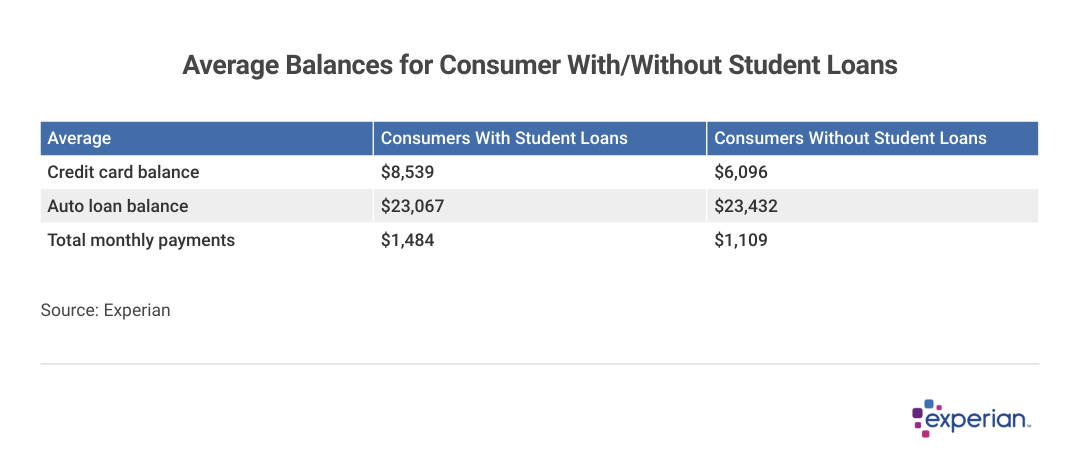
Larger Financial Hurdles for Student Loan Borrowers
Despite income-based repayment plans becoming more commonplace among borrowers, many still face greater financial challenges than those without monthly student loan payments.
In general, those with student loan balances carry greater financial burdens elsewhere. While auto loan balances are similar for consumers in both categories, those with student loan balances have much larger average credit card balances than those who don't have student loan debt. They also have larger monthly payments to service all their debts versus those without student loan bills.
Those Still in College Will Be Subject to Higher Rates on Student Loans
The high cost of borrowing has now reached students. It wasn't unexpected: Interest rates for federal student loans (direct loans) have long been based on the auction prices for long-term government notes sold by the U.S. Treasury in May of each year. This year, as yields of those 10-year notes were at 15-year highs, so, too, will federal student loan costs be for the 2024-2025 academic year.
Beginning July 1, undergraduate students with direct loans are borrowing at a 6.53% rate.
Those undergraduates won't need to start repaying loans immediately, but when they do eventually leave academia, they'll likely be paying much more in interest (versus principal) than others who have federal loans with interest rates of less than 5%.



